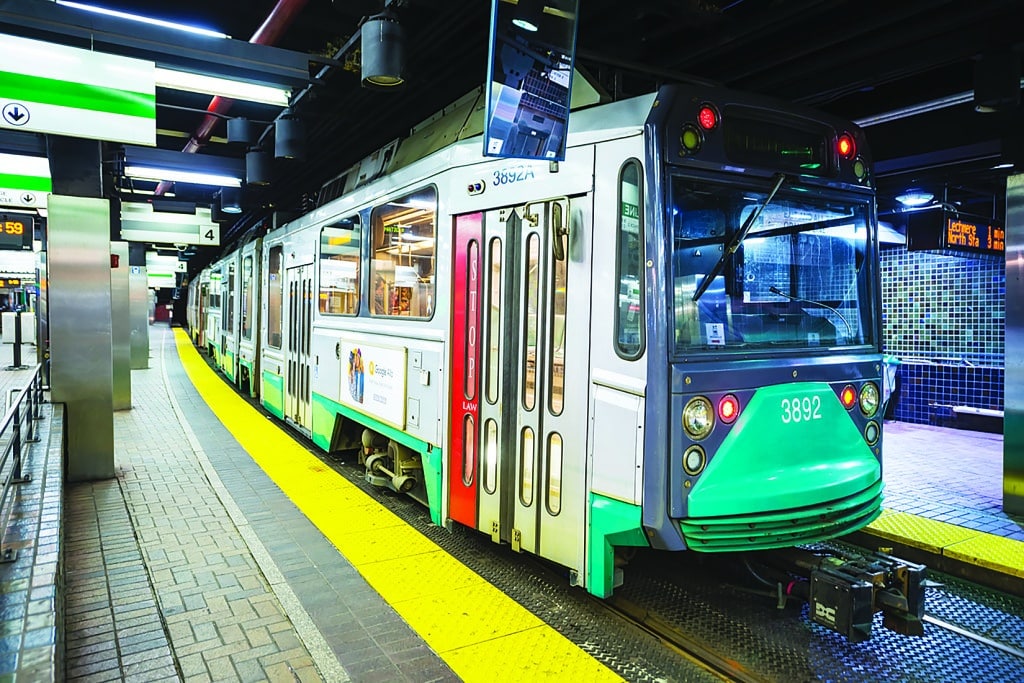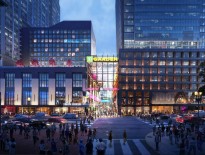
Union Square master developer US2 received approval for a 175,000-square-foot lab building in the first phase of its 2.4-million-square-foot project. Image courtesy of US2.
A pair of speculative lab projects by well-known local developers are ramping up this summer in Somerville’s Union Square and Boynton Yards, the next neighborhoods to stake a claim as a life science startup landing spots.
Boston-based Leggat McCall Properties and DLJ Properties of New York received $140 million in construction financing this month for 101 South St., a 9-story, 290,000-square-foot office and lab building in the Boynton Yards neighborhood.
And Union Square Assoc. achieved a pair of milestones, receiving planning board approval for a 175,000-square-foot office-lab building and reaching a tentative agreement with a community organization on a wide-ranging benefits agreement for its entire 2.4-million-square-foot master-planned redevelopment spanning 15 acres.
Both of the new lab buildings are targeting completion in 2021, when the Union Square station on the MBTA Green Line Extension is scheduled to begin operation. The new transit link – and Union Square’s relative proximity to Kendall Square’s industry hub – give developers a chance to capture the next generation of biotech companies emerging from local incubators. Increasingly, companies have been eyeing space in downtown Boston and the Seaport District and emerging markets such as Watertown, reflecting Cambridge’s chronic shortage of available space compared with tenant demand.
The city of Cambridge has 11.9 million square feet of lab inventory and no availabilities for class A lab space greater than 5,000 square feet as of midyear, according to Perry Brokerage research. And of the 2.1 million square feet now under construction, 69 percent is preleased.

The Green Line Extension to Union Square, planned for completion in 2021, will offer labs in Union Square a direct mass transit connection to the existing biotech hub of Kendall Square.
A Strategically Located Neighborhood
Union Square’s location on future public transit and its proximity to Kendall Square shares some of the same characteristics as Cambridge Crossing, the long-dormant 45-acre development site on the Cambridge-Somerville border that’s attracted more than 1.3 million square feet of office and lab leases in the past two years.
But unlike Cambridge Crossing’s blank canvas as a former rail yard – and Kendall Square’s often-sterile street scene – Union Square offers life science companies a chance to grow in a mature urban neighborhood.
“Somerville is cool. It’s where their [employees] live and go out to have fun after work,” said Duncan Gratton, an executive director at Cushman & Wakefield which represents 101 South St. in leasing. “We’re going to put these real estate projects closer to where the young talent hangs out.”
Gratton declined to give asking rents for the South Street property but said the building will be marketed as multi-tenant space. That reflects early-stage life science companies’ short timelines for making real estate decisions after securing expansion funding.
“The bread-and-butter users, the under 100,000-square-foot companies, don’t look two or three years in advance. That’s why you’ve got to start these buildings on spec and get them moving,” Gratton said.
US2 is partnering with developer Skanska, which has local experience building life science space in the Seaport District, on the 175,000-square-foot lab building in Union Square designed by architects SGA.
The overall project received final MEPA approval on June 28. The office and lab building is part of the first phase of the development, along with 200 units of income-restricted housing in a 399,000-square-foot building and a 12,000-square-foot arts building.

Steve Adams
Strategies to Protect Existing Tenants
A community organization that represents the interests of Union Square’s existing businesses and residents has been negotiating with US2 for more than a year on a proposed community benefits agreement. The phasing of the development, particularly the timing of the affordable housing component, has been a critical sticking point, said Ben Bradlow, a board member of the Union Square Neighborhood Council.
“One of the overriding themes was dealing with anticipated displacement from the development,” Bradlow said. “The key dimension was getting more of the affordable housing earlier to make a dent in the displacement.”
The council has not announced details of the tentative agreement, which still requires ratification by two-thirds of its members. But Bradlow said one of the goals was to ensure that a substantial portion of the affordable housing component be built in the first phase, to offset displacement of residents from rising real estate prices. The council also sought a higher threshold of income-restricted units than the 20 percent standard that Somerville adopted in 2016.
On the commercial side, the council sought provisions to protect existing small businesses from displacement, environmentally sustainable designs and commitments to maintain publicly-accessible open space. It also sought a commitment from US2 to attract businesses that embrace so-called “high road” employment practices, a set of principles by American Sustainable Business Council including family-friendly benefits and community engagement.




 |
| 
